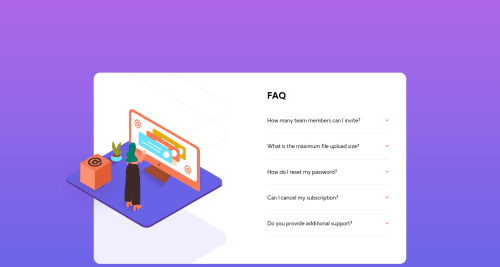Responsive accordion using HTML, Vanilla CSS and JS

Solution retrospective
A little additional functionality is needed. I want to close an open accordion when I open another automatically. My current situation is that I can open all accordions by individually clicking on each. Can someone help me with this?
Please log in to post a comment
Log in with GitHubCommunity feedback
- @thisisharsh7
Hey Alvin, great work! your solution looks perfect. In order to resolve your query to close an open accordion when you open another. You can make a new function outside the
for loopin your code and then calls it inside the add event listener after the end ofif-elsestatement. Consider an example function like thisfunction whichButtonClicked(x){ //here x takes the value which button clicked by user for(let i=0;i<btns.length;i++){ if(i!=x){ //do this for all non-clicked button by the user answers[i].classList.add("hidden"); btnQuestion[i].classList.remove("active"); accordionIcon[i].classList.remove("rotate-icon"); } } }Now call this function before the end of
add Event listenerin your code like thiswhichButtonClicked(i);I hope this answers your query..
Marked as helpful - @loopchaves
Hi, Alvin!
You can use the
<details>tag instead of<button>to make the accordion. When you click on a<details>, the "open" attribute is added, which means that<details>is open. Just remove the "open" attribute from the rest of the<details>using JavaScript.Marked as helpful
Join our Discord community
Join thousands of Frontend Mentor community members taking the challenges, sharing resources, helping each other, and chatting about all things front-end!
Join our Discord